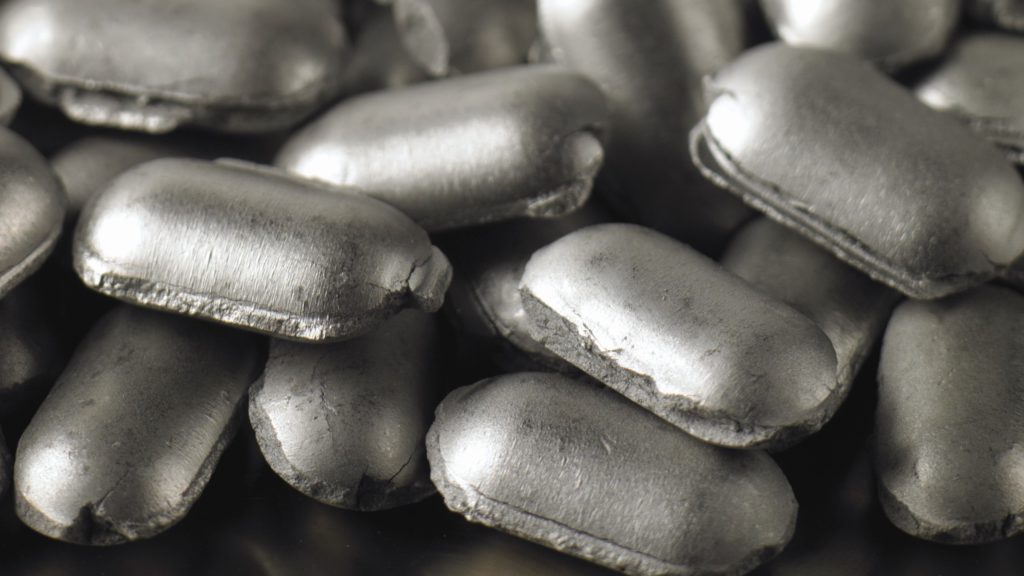Column: INSG forecasts a third consecutive year of nickel surplus

Global nickel production will outpace demand to the tune of 239,000 metric tons next year, according to the International Nickel Study Group (INSG).
It will be the third consecutive year of excess supply and the surplus will be the largest yet.
The INSG, which held the second of its twice-yearly meetings in Lisbon this week, estimates the market was in a 104,000-metric ton surplus last year with the figure set to rise to 223,000 metric tons this year.
The cumulative forecast surplus of 566,000 metric tons over the three years is huge relative to the size of the nickel market. Global consumption this year is expected to come in at 3.2 million metric tons.
The growing surplus of nickel has up to now been largely hidden in forms of the metal that aren’t traded on either the London Metal Exchange (LME) or the Shanghai Futures Exchange (ShFE).
But funds are betting that’s going to start changing soon. Investor positioning in London is the most bearish it’s been since 2019.
Indonesian ramp-up
Global nickel demand is rising fast thanks to the metal’s use as a cathode input for electric vehicle (EV) batteries.
The INSG expects usage to grow by 8% this year and another 9% in 2024 with accelerating EV demand compensating for a sluggish stainless steel sector.
However, global production will grow by an even faster 12% this year and by another 9% next year.
This is, of course, all about Indonesia, where production continues to boom as the country positions itself as a key raw materials supplier to EV battery-makers.
Indonesian mined nickel output surged by 31% year-on-year in the first seven months of 2023, according to the INSG. The mining rush fed an 85% jump in production of intermediate products such as nickel pig iron (NPI) and nickel matte and a 20% rise in primary nickel products such as sulphate.
But rising global production is also increasingly about China, which lifted its primary nickel production by 18% year-on-year in January-July.
Although China’s NPI production is shifting to Indonesia, the country is increasing its refining capacity.
Macquarie Bank estimates that China added 270,000 metric tons of capacity to process intermediates into nickel sulphate last year, while Chinese and Indonesian companies have announced plans to lift nickel cathode capacity by 250,000 metric tons by the end of 2024. (“Commodities Compendium”, Sept. 27, 2023)
The build-out of more capacity to convert intermediate Class II products into Class I primary products should mean surplus units increasingly spilling over into the type of nickel traded on both London and Shanghai markets.
Closing the price disconnect
Nickel has been the weakest performer among the LME base metals pack this year. Currently trading at $18,525 per metric ton, three-month metal is down by 60% on the start of January.
But the refined metal price is still significantly above prices of intermediate products, attesting to the disconnect between a still tight Class I market and ever-building surplus in the Class II segment.
There are signs that some of that surplus is now trickling into the Class I market.
Headline LME nickel stocks of 42,384 metric tons are still down by 23% on the start of the year but appear to have bottomed out with over 5,000 metric tons of arrivals since the start of September.
Shanghai exchange inventory has been extremely low for many months but last week jumped to a one-year high of 7,470 metric tons.
Fund managers are betting that more surplus nickel will appear in the refined segment of the market and ultimately the market of last resort that is the London Metal Exchange.
The collective bear bet flexed out to a net 15,579 contracts in the week to Sep. 26, according to the latest Commitments of Traders Report.
That’s the largest short position since 2019, when it reached a peak 18,899 contracts. Expressed in open interest terms, it’s larger due to the decline in LME nickel activity after last year’s March meltdown, which saw trading suspended and trades controversially cancelled.
The INSG’s latest assessments confirm the bear narrative. Just about every analyst out there thinks the market is in structural supply surplus, even if the numbers vary.
The big bet is how long that surplus takes to be converted into a form that can be delivered to both the LME and ShFE in sufficient quantities to push the price lower.
The big risk is that the bears are running ahead of that conversion process and after last year’s turmoil we all know the dangers of having to cover a big short in the London nickel market.
(The opinions expressed here are those of the author, Andy Home, a columnist for Reuters.)
(Editing by Sharon Singleton)
More News
{{ commodity.name }}
{{ post.title }}
{{ post.date }}

Comments